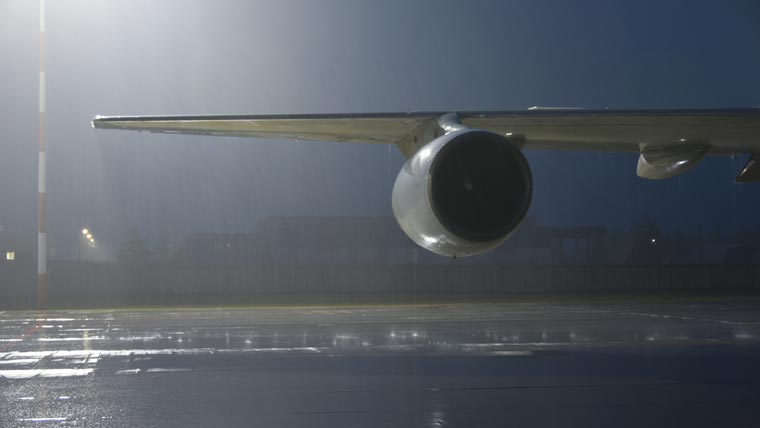Managing stormwater quantity and quality are especially challenging tasks for airports. They must manage stormwater in a way that will not compromise aircraft safety while still meeting various federal, state and local regulations to protect water resources.
Drainage infrastructure systems in airports have historically been designed based on past rainfall events. However, this planning method may leave airports vulnerable as rainfall extremes intensify in response to climate change. As we face the uncertainty of a changing climate, planning for resiliency becomes ever more critical for airports. Implementing good stormwater practices early on can help build climate resilience for the future.
Effectively managing runoff enhances safety
Stormwater runoff poses multiple safety and regulatory challenges for airports. The immediate safety of maneuvering aircraft is the predominant concern of FAA guidance for surface drainage design. Environmental protection must also be addressed in airport infrastructure improvements. Surface water quality protection at airports stems from the National Pollution Discharge Elimination System (NPDES) requirements under the U.S. Clean Water Act and local ordinances.
Many stormwater management systems, such as those containing open water and certain types of vegetation, can become wildlife attractants. This can create potential hazards for aircraft. Therefore, it is imperative that airports evaluate options for managing stormwater quantity and quality to strike a balance between airport safety and environmental protection.
Stormwater quantity management
Airports are required to manage the quantity of stormwater that is discharged from large, paved areas. Effectively managing the quantity of stormwater runoff is important for safe operation of the airfield in a storm event and to reduce downstream impacts from flooding and erosion. This process will become even more challenging as climate change impacts the characteristics of rainfall events. Specifically, more intense and extreme rainfall events can increase flooding potential both onsite and offsite. Stormwater quantity control that relies on surface detention ponds must be designed, constructed, and maintained for a maximum 48-hour detention period after the storm. They must remain completely dry between storms to minimize open waters, which are wildlife attractants.
Stormwater quality management
Many everyday activities that occur at airports, such as fueling aircraft and ground vehicles, maintaining and cleaning equipment, and aircraft deicing, are considered industrial activities. Because a large amount of airport property is impervious (paved), rain that falls onto these surfaces where industrial activities occur has potential to collect pollutants from the paved surfaces before discharging into surface waters. Appropriate measures need to be taken to provide water quality improvements and protect receiving waters, which also maintain aircraft safety and operations.
What needs to be done?
Best management practices (BMPs) associated with stormwater quantity and water quality at or near airports must consider site-specific physical conditions, area of watershed, runoff volume or peak flow, and water-quality objectives to meet federal, state, and local water quantity and quality standards. The Airport Cooperate Research Program (ACRP) provides guidance focused on stormwater quantity and quality applicable to airports.
In addition, airports will need to examine future climate predictions and design stormwater management systems to handle predicted rainfall events. This will help the airport avoid flooding events and will also reduce pollutants reaching nearby waterways. Stormwater quality management is easiest if considerations are made early in planning and development. New projects will need to identify opportunities to combine stormwater management with stormwater resilience.
Airport stormwater quantity and quality management must be evaluated and applied with sound engineering judgement. Knowledge of aviation, hydrology, hydraulics, water quality, geotechnical, transportation, and environmental subjects is key to a sound design, and our team can work with airports to identify, plan, and design an acceptable water quantity and quality management strategy.



